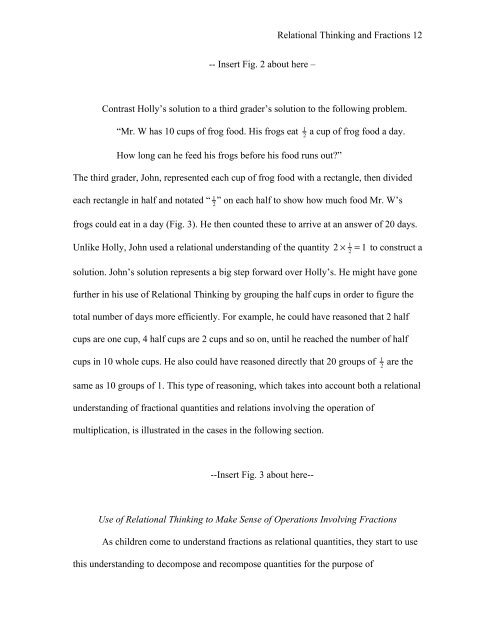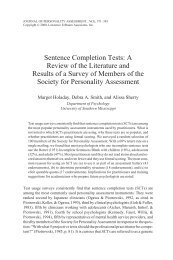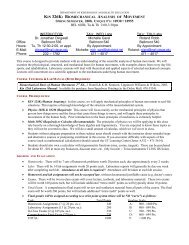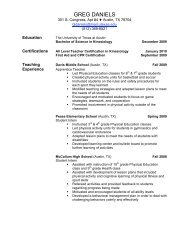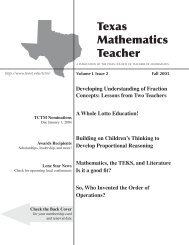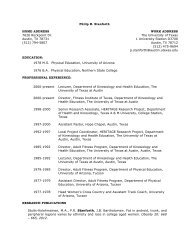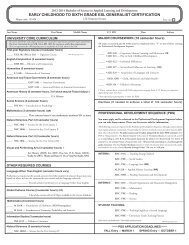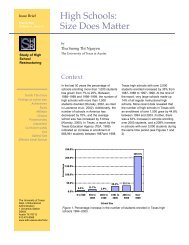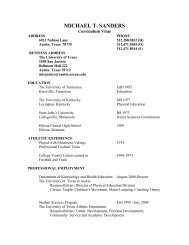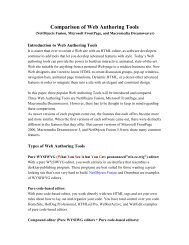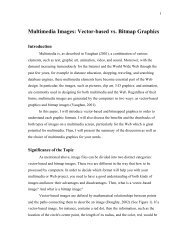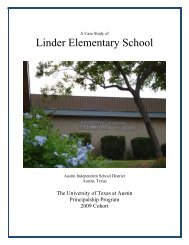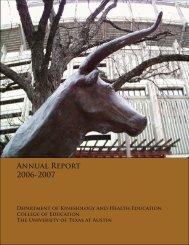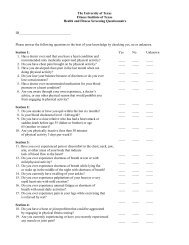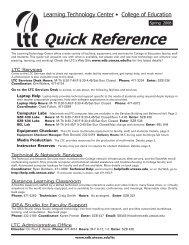The Algebraic Nature of Fractions: Developing Relational Thinking ...
The Algebraic Nature of Fractions: Developing Relational Thinking ...
The Algebraic Nature of Fractions: Developing Relational Thinking ...
You also want an ePaper? Increase the reach of your titles
YUMPU automatically turns print PDFs into web optimized ePapers that Google loves.
-- Insert Fig. 2 about here –<br />
<strong>Relational</strong> <strong>Thinking</strong> and <strong>Fractions</strong> 12<br />
Contrast Holly’s solution to a third grader’s solution to the following problem.<br />
“Mr. W has 10 cups <strong>of</strong> frog food. His frogs eat<br />
How long can he feed his frogs before his food runs out?”<br />
1 a cup <strong>of</strong> frog food a day.<br />
2<br />
<strong>The</strong> third grader, John, represented each cup <strong>of</strong> frog food with a rectangle, then divided<br />
each rectangle in half and notated “<br />
1 ” on each half to show how much food Mr. W’s<br />
2<br />
frogs could eat in a day (Fig. 3). He then counted these to arrive at an answer <strong>of</strong> 20 days.<br />
Unlike Holly, John used a relational understanding <strong>of</strong> the quantity 2 × 1<br />
2 = 1 to construct a<br />
solution. John’s solution represents a big step forward over Holly’s. He might have gone<br />
further in his use <strong>of</strong> <strong>Relational</strong> <strong>Thinking</strong> by grouping the half cups in order to figure the<br />
total number <strong>of</strong> days more efficiently. For example, he could have reasoned that 2 half<br />
cups are one cup, 4 half cups are 2 cups and so on, until he reached the number <strong>of</strong> half<br />
cups in 10 whole cups. He also could have reasoned directly that 20 groups <strong>of</strong><br />
1<br />
2<br />
are the<br />
same as 10 groups <strong>of</strong> 1. This type <strong>of</strong> reasoning, which takes into account both a relational<br />
understanding <strong>of</strong> fractional quantities and relations involving the operation <strong>of</strong><br />
multiplication, is illustrated in the cases in the following section.<br />
--Insert Fig. 3 about here--<br />
Use <strong>of</strong> <strong>Relational</strong> <strong>Thinking</strong> to Make Sense <strong>of</strong> Operations Involving <strong>Fractions</strong><br />
As children come to understand fractions as relational quantities, they start to use<br />
this understanding to decompose and recompose quantities for the purpose <strong>of</strong>


